
views
Getting Started

Get a good teacher. Before you buy pointe shoes, make sure you have a good dance teacher. Go there yourself to check out the teaching, if you don't already work with a teacher. Talk with people who know what they're doing to make sure you are getting the proper and safe training. It is better to continue pointe-work with a teacher you have had for several years. They should be able to tell you when you are ready for pointe-work.
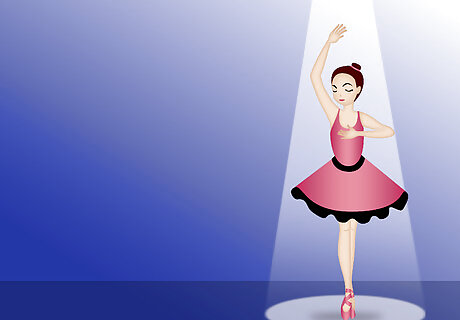
Complete at least three years of regular ballet training in a good studio. A good rule of thumb is to be dancing for at least 3 days a week. Of course, there are no exact timeline for this, and you should only do pointe work when your teacher says that you're able to do it. This allows for your muscles to keep growing, as opposed to only dancing one a week wouldn't. The most important thing about starting pointe-work is knowing when to begin. Pointe-work is difficult and requires years and years of training to become proficient. To start pointe-work, the dancer must be extremely strong and well trained in basic ballet techniques. You must be physically and mentally prepared to start this kind of work. Do not ever attempt pointe-work without a professional instructor to give you the go-ahead. Dancing on pointe can be somewhat painful to a beginner or someone without proper instruction.
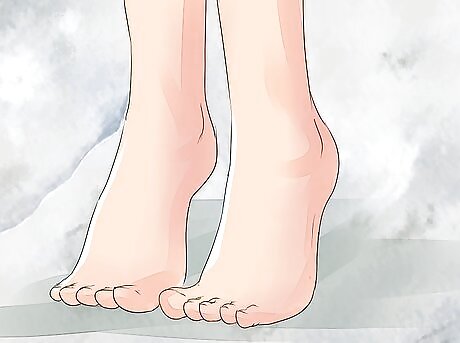
Develop strength in your ankles. Continue your basic ballet classes as normal, focusing on maintaining balance in your ankles and strengthening them as much as possible. Ankle strength is one of the most essential components of successful pointe work, and it's likely you won't be recommended for moving forward with dancing en pointe unless your ankles are very strong. On your own, practice heel-raises to help strengthen your ankles. Stand on your toes and raise your heels up in the air, flexing your calves. Stay balanced. Repeat these raises in sets of 10 or 15. Do three sets, with a minute of rest in between.

Expect some numbness and discomfort. Going on pointe for the first time will not be comfortable. It may be difficult and confusing to feel your feet in them, but it gets much easier as time goes by. It's important to go in with the correct expectations so you don't get discouraged. If you've been taking ballet for a few years, get excited! You're almost taking the next big step into advanced ballet. If you're a little freaked out, get beginner pointe shoes. They will support your feet better if you don't have as strong a foot as is needed to stand fully on your toes yet.
Buying and Preparing Pointe Shoes
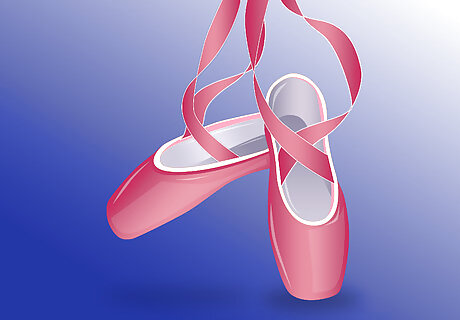
Purchase the correct shoes. Once you have found a good beginner’s pointe class, go to the store and buy your pointe shoes. Talk to a salesperson at the store and ask for assistance. Make sure that your pointe shoes fit your feet snugly. They should make your feet look long and thin. If you have soft arches, make sure that the shoe you get has a soft shank. Some good shoes for people with soft arches are Capezio, Mirella, and Bloch Sonata. If you have strong arches, you should try Grishko and Russian Pointe. Don’t buy the shoes online. Pointe shoes are extremely hard to fit, and you should take at least a half hour with the salesperson to find the right fit. Don’t try to purchase shoes in a larger size, expecting that you will grow into them. The shoes should fit perfectly and be slightly difficult to put on.
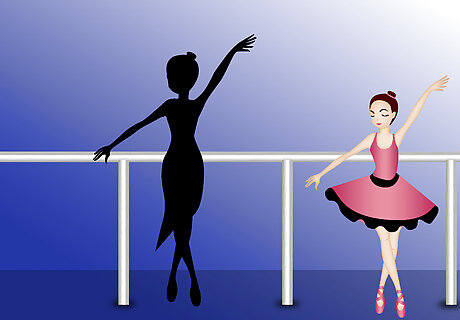
Listen to your instructor. Once you have found a good pair of pointe shoes, go and check with your instructor. Do whatever your instructor says. If you need to go get different ones, go get different ones. Your instructor’s discretion is the most important information you can get for your safety and comfort. If possible, have your teacher come with you to buy your first pair.
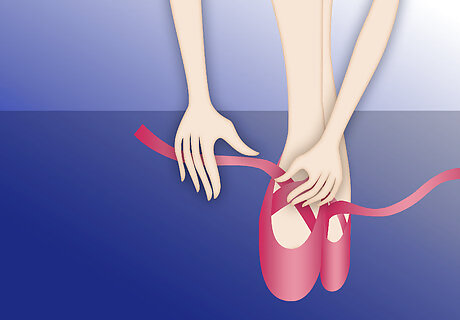
Prepare your pointe shoes for dancing. Break in the shoes correctly. A good way to break in your pointe shoes is to use your hands and roll through the arch. Try to break them in with your hands first, at home, before you wear them into the studio. Normally your teacher will show you how to sew them, but if he/she does not, then look up videos on YouTube. Note: some brands, such as Gaynor Mindens, do not require breaking in. Do research before attempting any type of method on your shoes. As important as it is to break in the shoes, don't overdo it until you are experienced with pointe shoes. Never break in your shoes sickled or it is just a wasted pair of pointe shoes. Don’t use gel pads for beginning with. You need to feel the floor. Instead, use a thin foam, wool, or fabric padding. As a beginner breaking in a pointe shoe, just wear it around with a sock over it.
Dancing En Pointe
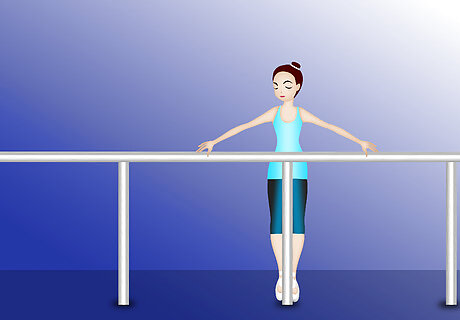
Try the first class. Now that your shoes are broken in, you can go to your first class. For a beginner’s class, you will spend a good amount of time at the barre for warm up exercises. You probably won’t go in the center at first. Your teacher will decide that for you. Dancing en pointe is very hard, and being good at it is even harder. Do not wear your pointe shoes without your teacher, but wait for your instructor's approval. Be patient. For many dancers, beginner classes aren't super-fun, but they are crucial to building strength.
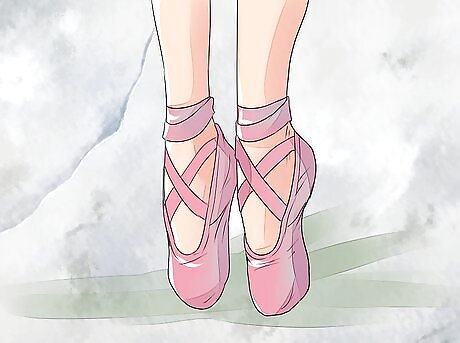
Concentrate on the alignment of your whole body. You want to focus on lifting out of the shoes. Remind yourself that the longer and harder you work at the barre, the stronger you will be for the center exercises. Keep a strong core. Dancing en pointe is much harder to maintain balance and so it is crucial to have a strong core. If your core is loose, chances are, you'll get hurt or it will just be much more complicated than it needs to be. Point your foot in your shoe. This will help you stabilize yourself for barre and center work. When you're en pointe, that doesn’t mean that your foot is truly pointed. Think about pulling up and out of your shoes.
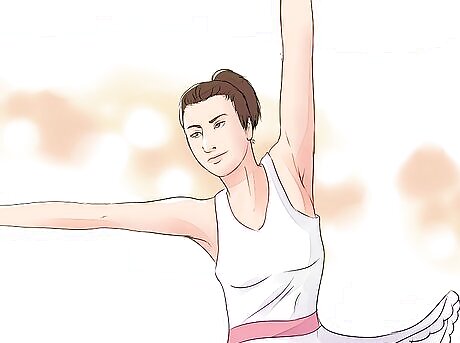
Engage everything. If there is one way to make sure you will fall, it is relaxing your muscles. To keep your foot pointed, work your Achilles tendon and flex your calf muscle. To keep your leg straight, engage your quadriceps. To lengthen and extend the leg, use your hamstrings. To turn out, use your hip flexors and your glutes. To balance, use your abdominals. To keep good posture, pull down in your back muscles.

Manage the pain and talk to your instructor. When it's your first class you may only last ten minutes before some pain sets in. If you experience numbness, tell your instructor right away so you can take off the pointe shoes. How you can also tell if you should stop is every minute or so to make sure blood is still flowing through your toes and your toes still have feeling in them. Don’t sink in your pinky toe. This is known as sickling. It is really bad for your feet, ankles, and knees and makes dancing harder, not to mention potentially causing serious injury. Keep your weight in the middle of the box, on your big toe.
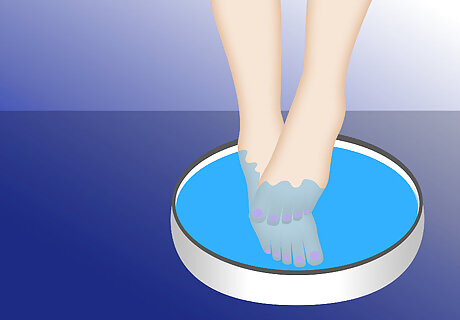
Care for your feet. Your feet will probably be sore or numb afterward. The pain will decrease after a couple weeks. Soaking your feet in warm water is good for your feet because it relieves tension and relaxes the feet. Do not go for a foot spa or remove your callouses, since you need them on your feet, which help in pointe work. Use a stress ball or footsie roller by Bunheads to massage your feet. After class, put baby powder on your feet to soak up the sweat and do the same with your padding. Always keep your toenails to average length (not too long nor too short-- which can be very painful) Let your pointe shoes air out because if you don't they will soak up the sweat and break faster. Remember that pointe shoes only last up for a few months or years, depending on how often you use them. For professionals, they usually go through numerous pairs in just a few months or even week/s.
Building Strength
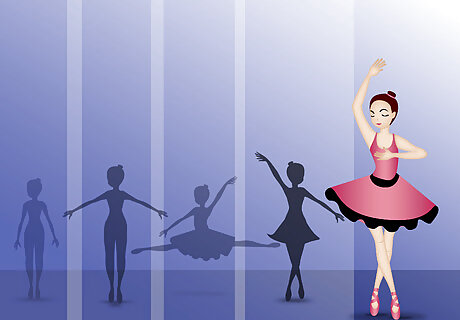
Work out your feet and legs. There are many ways to work out your feet so that you have more strength for your next class. You can do relevés, jumps and even just pointing your toes. It is nearly impossible to force turnout en pointe so you need to have strong turnout ahead of time. A suitable exercise for readying yourself for turnout is the frog stretch. Ankle strength is the most important thing if you don't want to get hurt. Do some relevés at the bar before class. Soften (bend) your knees slightly when doing pointe work.
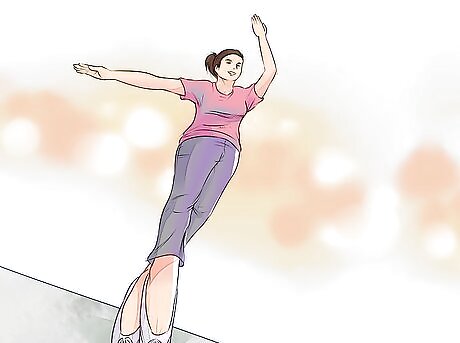
Practice at home in soft slippers. Concentrate on working your feet and legs and pointing to the maximum. Engage everything. It will be easier to point your feet in pointe shoes if you have that extra strength gotten from practicing on your own.

Continue your regular training. Don't stop taking regular technique classes just because you are on pointe. Pointe work alone will not improve your overall ballet technique. Regular classes will give you much more strength to help with your pointe work!
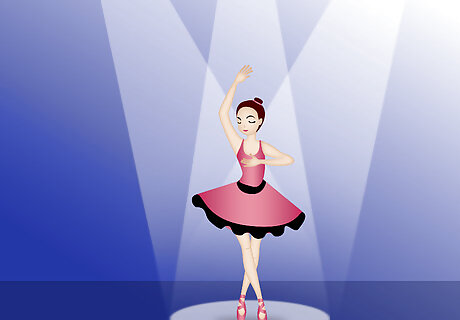
Stay strong and be patient. Most of all, listen so that you can become an amazing dancer!




















Comments
0 comment